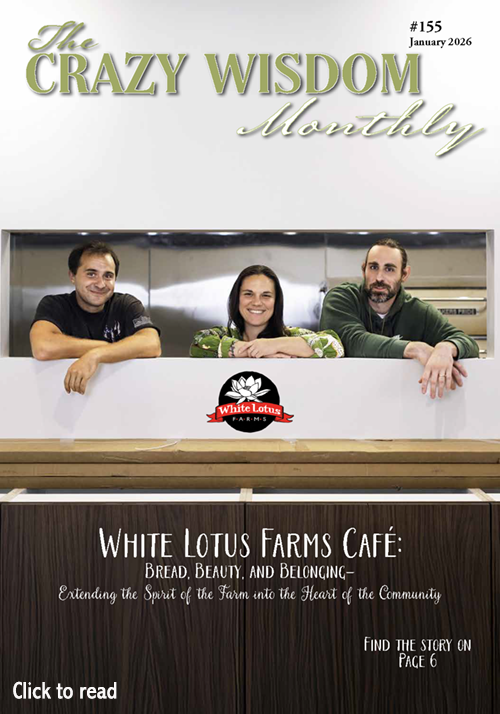Book Review by Catherine Carlson
Would you have ever considered that lovely glass of wine, specifically the grapes that made it, may have a message for you? A message that goes beyond your health? Author Sandor Katz has. His most recent book, Fermentation as Metaphor, is a timely exploration of the subject of fermentation and how the fermentation process taking place with foods and beverages are analogous to what may be going on with us—as in society as a whole.
Katz loves fermented foods and has a handful going at any given time. He ferments yogurt and jun (related to kombucha), sourdough starters and kimchi, as well as sake and several country wines. His obsession with fermentation led to his authoring several books and becoming a well-known fermentation revivalist who travels and teaches throughout the world. Beyond just meaning undergoing fermentation, ferment, is defined as “to be in a state of agitation or intense activity.” Katz says this means anything in this excited or bubbly state is essentially fermenting. The versatility of this metaphor is impressive.
A primary reason for eating or drinking something fermented is because “Fermentation of foods and beverages breaks down nutrients into simpler, generally more accessible forms. It can also break down toxic compounds into harmless substances.” Reflectively, we witness fermentation in our daily lives as outdated structures, ideas, and systems eventually break down. It’s not the end though, something new always comes in its place and the cycle repeats.
One of the biggest metaphors Katz illustrates in the book is that of purity and contamination. He cites the “war on bacteria” as one example of a paradigm that is breaking down. The world we live in includes a variety of fungi, bacteria, viruses, and other organisms. Now more people are accepting fermented foods and beverages, and the bacteria they contain, are safe because fermentation is a self-protecting process. They are also recognizing fermentation contains a diversity of microbiology that helps to keep us healthy. Even Katz, who has lived with HIV for decades, grew to respect viruses as a necessary part of our existence. Similarly, the diversity of organisms large and small are what help us all co-exist together.
The myth of purity permeates fermentation. Katz says nothing can ever be pure, despite all of our efforts. He offers that even “pure” gold is 99.9% pure. He expounds upon this notion and the irrational fears we may have around many types of things (or people) that may be considered impure. For example—young children exploring with their hands and mouths may cause adults to become fearful that the kids will ingest something that is harmful. When really, Katz says, this type of exposure is important to our immune systems. He says, “If purity means a state devoid of contamination, that is pure fantasy.”
Read related article: Book Review: The Five Element Solution By Jean Haner
Another fantasy he speaks of is the desire to keep things inside a “perfect protective border.” In nature this is not the case. The seashore is a blend of earth and water, each blurring into the other. Fermented foods and beverages are designed to grow wild and uncontained with layers of different microbiology. Similarly, human beings, and the way we live, cannot exist in a nice and neat container. I can think of no better metaphor of this than the last two years. The longer we humans have been kept in a prescribed container, the more fermented we have become.
As an offshoot of his love of fermented foods and beverages, Katz also enjoys photographing them so he can view and share with others what he sees as beautiful. With access to specialized microscopes, he has been able to capture detailed pictures of anything from radish kraut to moldy cornbread. By colorizing them, they become brilliant, textured works of art. The book is filled with them.
I was not familiar with this subject before reading this book and I would say you don’t have to be interested in eating or drinking fermented foods to appreciate Fermentation as Metaphor. Katz effortlessly draws many parallels between the micro and the macro, between what we eat and who we are. Fermentation can be likened to acceptance and freedom. Miso is a mascot to the maverick. He says fermentation is not a trend but a part of life. Mutation is inevitable. Feeling bubbly or seeing bubbles both signal transformation—and that means anything is possible.




































































































































































































Your Creator Matrix by author Cathleen Beerkens blends deep personal insight with cutting-edge science to offer a roadmap for taking control of your story and reprogramming your reality in the process.